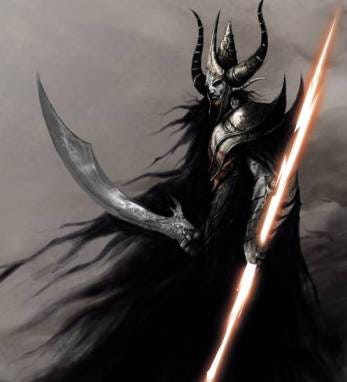Why is it important to kill Ravan?
Rambha was to be married to Kuber’s son. Kuber was Ravan’s half brother – same father but different mothers. Ravan saw her and was enamored by her. She kept pleading that she was like a daughter to Ravan, he nevertheless raped her. Many other women met the same fate – including Vedavati.
Mandodri, who was Ravan’s wife was sick and tired of her husband’s deeds and decided once to drink from the blood pot where Ravan used to accumulate the blood of the Sages he used to kill on his ventures around the world. The contents of this pot were said to have become poison. Ravan had somehow mixed the milk from Darbha grass purified with mantras by Sage Gritsamada. According to Adbhuta Ramayana, one version of the Ram’s story, this drink from the pot instead makes Mandodri pregnant. The girl child born – an incarnation of Lakshmi – is buried by Mandodri to be discovered by King Janak, and raised as Sita.
Sita has many names which give her various dimensions. Her most popular Sita – means furrow. She is said to be the daughter of the earth. She eventually returns to where she was found from.
When the author discusses Ravan in the post “Symbolic Festivities – Do they make you think?”, the facts considered are from very superficial understanding of the scripture.
Ram of Ramayan is one who has mastered the highest wisdom and sees everything in him and himself in everyone. Abandoning of Sita is held against Ram’s character. Yet, Gautama Buddha is let go easily as he abandoned his toddler – who was called Rahul (Raah ka kaanta) – and his young wife. Nanak also gets an easy passage, as he leaves his wife and two sons to roam around the world as others help them with their living. Meera, who leaves her husband devoted to her God, is also en epitome of Bhakti.
Buddha, Nanak, Meera and Ram were not ordinary souls. It is not possible to evaluate them within the purview of the societal morals. If we do, we will fail and fail miserably. Bhakti, Omnidirectional love, and compassion of a Realized Soul is for the Universe. It is One with the Universe. For Buddha, his son and millions of humans were no different. He was to know the suffering of humanity, which would one day be his son’s suffering as well.
Ram and Sita and their interaction can be seen in the same perspective. And with the same contradictions as well.
Ravan was the face of exclusivity and desire. He was what wisdom becomes when it is propelled by ego to propagate power and use it to fulfill desires. He was the product of a family of beings who were looking for ways to get the powers that Sages had. Sages understood that with power comes responsibility and so used them sparingly if ever. In fact, Sages’ powers were the side effect of their main goal – Yogic journey to Realization. The Rakshasas, however, yearned for power for powers’ sake!
There is a difference between Einstein and Osama Bin Laden. For Einstein, nuclear weapon was the side effect of his main search for knowledge. For Osama, nuclear weapon is his only obsession for a cause of killing!
The same difference existed between the Sages whose blood filled the pot that Mandodri drank from and Ravan.
Ram did not kill Ravan for Sita. Sita was to become the symbol for Ravan’s misdeeds. To evaluate Ravan’s character on what he did and could not do with Sita is a gross mistake. Just as it would be to hold Sita’s abduction as the justification enough for Ram’s endeavor to kill Ravan.
In the world of fast food where we look for instant gratification, it is easy to look for one event in isolation and make up your entire analysis based on that. It takes effort to follow the entire story and then look at the big picture.
One would be tempted to say that what I have laid out above is just a set of stories stacked up against Ravan. Well, in that case so is the entire story about Ramayan to them! If we are to analyze the character of this story’s protagonists, at least let us read it fully.
Maybe, not everything in Ramayan is fact. But it is the Truth. Truth of the face of evil – which looks for short cuts and uses the strengths of Sages in every generation to garner weapons with which to further its own diabolical interests. Every generation has seen a Ravan, just as every generation has seen an Osama.
One thing common in the stories of Rakshasas and the Sages was that Sages would take the destruction of the former without a fight, hoping their evil would be blunted. But it never was. Until a time came when they could not deal with it. And then they would run to Shiva or Vishnu who would incarnate and deal with the evil.
The takeaway from these stories for me has been that there eventually has to be a generation of Sages, who have the strength and valor of Shiva and Vishnu themselves, so they do not have to run to these “Gods”. When the Sages, not only value their wisdom but also the safe-keeping of their wisdom, only then will invoking of the Gods be needless. If the Sage could understand that Sword and Spiritual upliftment at times converge, only then will the diabolics of the evil minds – who are after power for the sake of destruction – be effectively dealt with.
Until then, we will have a unique situation, where the evil is put on the same pedestal as the Sage and the latter is asked to prove himself. Little realizing that what is put at stake is not the character of Ram but the very survival of humankind. Then and now.




